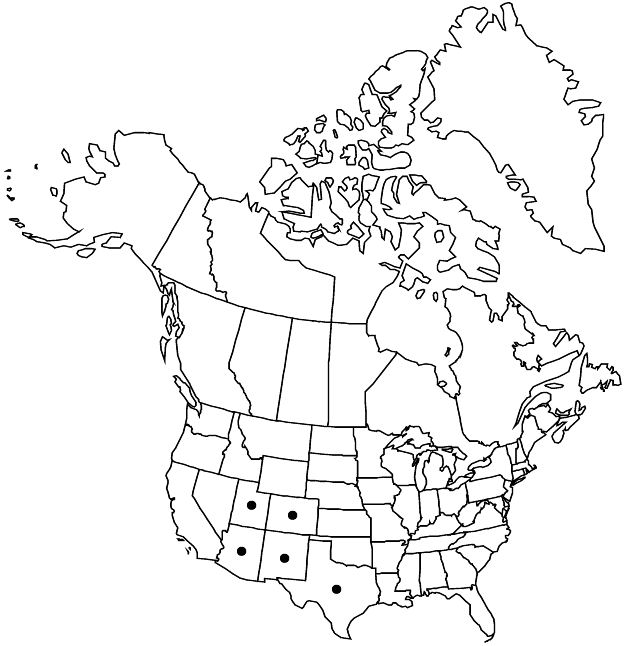Linum aristatum
Mem. Tour N. Mexico, 101. 1848.
Herbs, annual, 10–45 cm, glabrous. Stems stiffly spreading-ascending, slender, broomlike, branched throughout. Leaves alternate or proximalmost opposite, proximal leaves spreading, distal leaves appressed-ascending; stipular glands usually present; blade linear, 5–20 × 0.3–1.1 mm, margins entire, not ciliate, apex acute. Inflorescences diffuse panicles, branches relatively long, stiffly spreading-ascending. Pedicels 6–30 mm, slender. Flowers: sepals deciduous, outer linear-lanceolate, 5.5–9 mm, apex attenuate, inner somewhat broader, shorter, margins narrowly scarious, glandular-toothed, apex awn-tipped; petals faintly maroon at base, otherwise yellow to yellow-orange throughout, obovate, 8–12 mm; stamens 5–7 mm; anthers 0.7–1.1 mm; staminodia absent; styles connate nearly to apex, 4.5–7 mm; stigmas capitate. Capsules narrowly ellipsoid, 3.5–4.5 × 2.5–3 mm, thin-walled, apex obtuse, dehiscing into 5, 2-seeded segments, segments persistent on plant, false septa complete, proximal part membranaceous, not terminating in loose fringe, distal part cartilaginous, margins not, or only sparsely, ciliate. Seeds 2.5–3 × 0.8–1 mm. 2n = 30.
Phenology: Flowering May–Sep(–Oct).
Habitat: Open places, dry, sandy soils, sagebrush or pinyon-juniper zones.
Elevation: (300–)1100–3100 m.
Distribution

Ariz., Colo., N.Mex., Tex., Utah, Mexico (Chihuahua)
Discussion
The corollas of Linum aristatum are broadly funnelform and almost entirely rich yellow to yellow orange with a faint blush of maroon toward the base. The stamens and styles are yellow; the stigmas are greenish yellow. Linum aristatum is highly branched, giving it a bushy look. It can be recognized by narrowly ellipsoidcapsules and long-attenuate sepals.
Selected References
None.
Lower Taxa
"broader" is not a number."wider" is not a number.